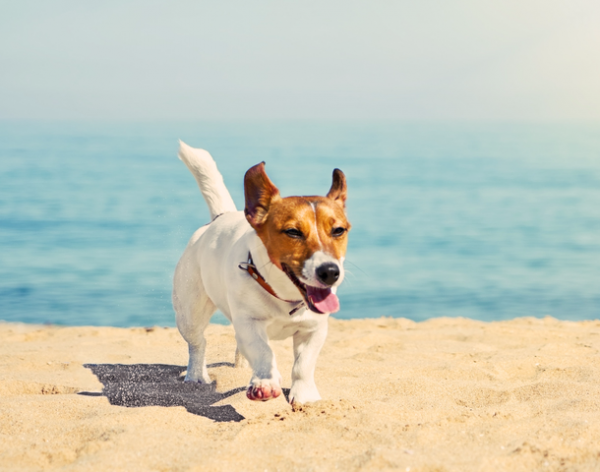Do you need help?

Is heat stroke serious for dogs and cats?
Heatstroke can be extremely serious. This advice on first aid for heat stroke in pets is not intended to replace veterinary care and attention. If your pet has suffered from any of the issues in these articles then, having carried out the first-aid measures described, you should contact your veterinary surgeon for advice on what to do next.
How to cool your dog or cat off fast
Heat stroke is a medical emergency and you must take immediate measures to rapidly cool your pet or they could die from the effects. Untreated, heat stroke rapidly leads to multiple organ failure, brain injury, blood clotting problems, and sepsis. Evidence shows that pets with heat stroke, when cooled before their arrival at the vet, are 2.5 times more likely to survive.
Don’t take risks with your safety. If necessary, move your pet to a clear area where you have the freedom to move around them. Shout for help if some is available. Gently restrain your pet using towels or blankets to assist you. If your pet is in pain or anxious, it may be more likely to be unexpectedly aggressive, so if you have a muzzle handy it might be wise to use it but be cautious not to obstruct their breathing, or cause distress.
If you suspect your pet is experiencing heatstroke, follow these steps for first aid in heat stroke for pets while seeking immediate veterinary care:
- Immediately move them to a cooler area.
- Rapidly cool your pet by either:
- Plunging them into cold water so they are fully immersed apart from their head, or
- Soaking their fur with cold water using a hose or shower and then turning a fan on them.
- If you can measure their temperature then stop cooling when their temperature hits 39 – 39.5C (slightly above normal), as it will continue to drop after cooling stops
- If you can’t measure temperature, then stop cooling once the signs of heatstroke, especially breathing effort, have resolved.
- Encourage your pet to drink cold water, in small quantities.
- Have them checked by a vet as soon as possible.
Note: Traditionally, advice was to use cool, rather than cold, water and to apply wet towels, but the latest advice, based on clinical research in both human and animal medicine, goes against that advice.
The use of cold water plus a fan increases evaporative cooling and is the most effective way to drop your pet’s temperature rapidly. In humans, plunge immersion in cold water is commonly employed to treat heatstroke.
What are the signs of heatstroke in dogs and cats?
Heatstroke can affect any pet and, whilst it’s far more common in the summer, we can see it at any time of the year, even in the snow!
Heatstroke is more common in dogs, especially those with thick fur, brachycephalic breeds (short-nosed), and older or overweight pets but cats and other small animals can also suffer from heatstroke.
Be alert to the following signs of heatstroke:
- Distress and attempts to move away from heat
- Hot to touch
- Excessive panting at rest
- Excessive drooling
- Bright red gums and tongue
- Lethargy and weakness
- Rapid heartbeat and breathing
- Vomiting and diarrhoea
- Seizure
- Collapse or unconsciousness
How can I prevent heat stroke in my dog or cat?
- Never leave your pet in an environment without access to good ventilation and fresh water.
- Limit exercise during the hottest parts of the day.
- If your pet is outdoors, ensure they have access to shade.
- Walk pets at dusk and dawn in the summer months.
- Never leave a pet in a locked car or other vehicle – even during only mildly warm spells cars can become dangerously hot in just 15 minutes.
- Consider cooling accessories like cooling mats or vests designed for pets
How can I get veterinary help immediately?
Heat stroke can be deadly. If you need immediate veterinary attention overnight or on the weekend or bank holiday, find your nearest Vets Now clinic. If you’re unsure, we partner with PawSquad telehealth service where you can speak to a vet online.

